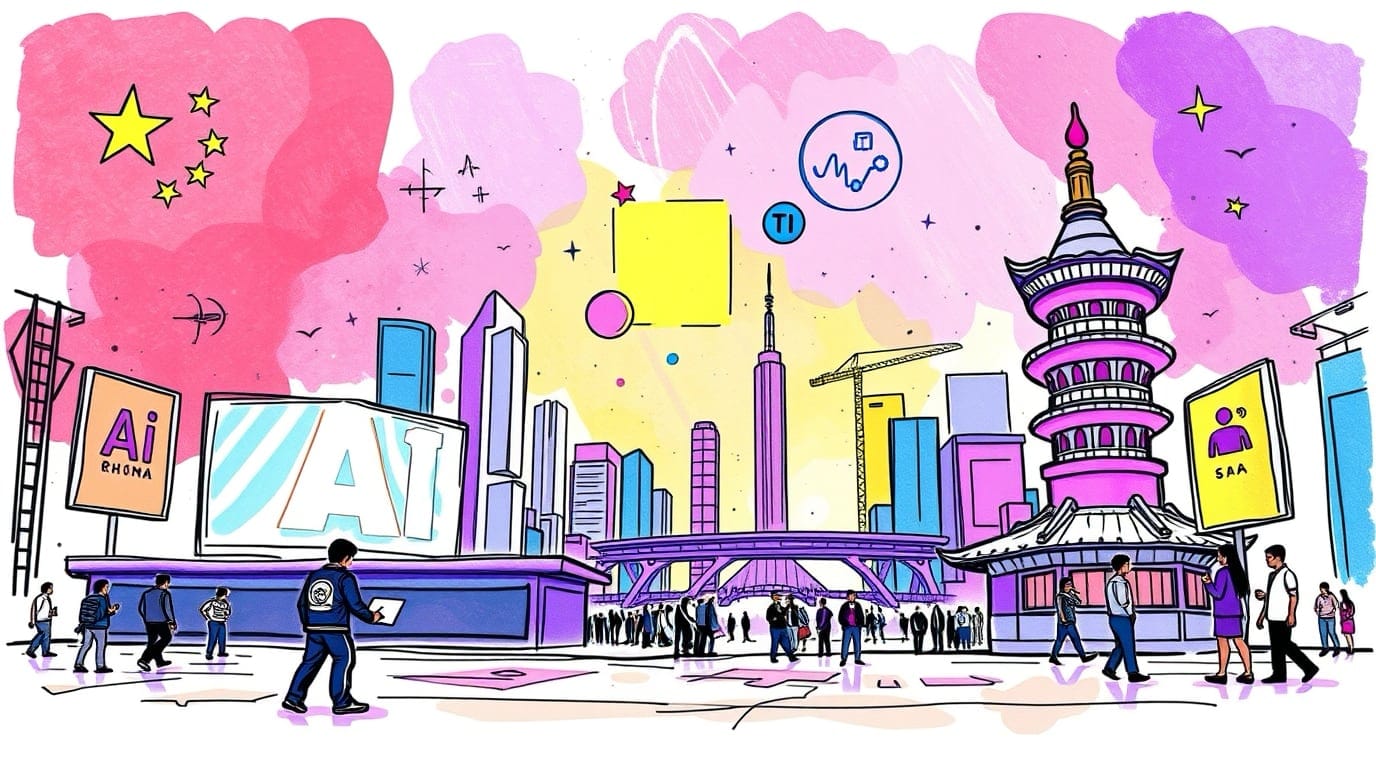China's AI Revolution

Artificial intelligence is no longer just a futuristic vision—it is reshaping industries, economies, and daily life at an astonishing pace. While Silicon Valley has long dominated the AI conversation, a new powerhouse is emerging from China, where companies are pushing the boundaries of what AI can achieve. From ultra-efficient large language models to groundbreaking image-to-video transformation technologies, China’s AI industry is advancing at a speed that has taken even the biggest players by surprise.
China's AI Powerhouse DeepSeek
On a winter night in Hangzhou, a small team of Chinese engineers watched as their creation sent shockwaves through the tech world. Their artificial intelligence model—DeepSeek—had just been released, and within days, it was challenging the most advanced Western AI models. DeepSeek’s AI, a powerful chatbot, was proving to be as intelligent as the best American models on the market. What made it truly revolutionary, however, was its efficiency and affordability. Unlike OpenAI’s ChatGPT or Google’s Gemini, which require enormous computing power and expensive cloud services, DeepSeek was an open-source model that operated at a fraction of the cost.
For every million tokens processed—roughly the amount of text in a full-length novel—DeepSeek charged just 1 yuan, or about $0.14. That was astonishingly cheap. The impact was felt immediately, forcing industry giants like Alibaba and Baidu to slash their own AI pricing in response. Alibaba, once considered the undisputed leader in China's AI race, suddenly found itself playing defense, cutting cloud AI service prices by up to 97% to remain competitive.
DeepSeek’s rise was unexpected but not accidental. The company was founded by Liang Wenfeng, a former hedge fund manager with a deep understanding of financial risk and a keen eye for market disruption. His transition from finance to AI was a bold one, and it paid off. DeepSeek’s rapid growth drew the attention of global AI researchers, some of whom started wondering if China was about to leap ahead in AI innovation.
This progress did not go unnoticed in the West. OpenAI and Google researchers began to study DeepSeek's capabilities carefully, and some experts warned that China’s advancements in large language models could lead to a new technological arms race. With the combination of affordability, accessibility, and rapid development, DeepSeek has positioned itself as not just an alternative to Western AI—but a serious contender in the field.
Alibaba's AI Innovations
As DeepSeek disrupted the landscape, Alibaba was not about to be sidelined. The tech giant, long considered the backbone of China’s AI development, responded with a swift and aggressive move. In early 2025, Alibaba introduced Qwen 2.5-Max, an upgraded version of its AI chatbot, boasting capabilities that reportedly outperformed DeepSeek. The announcement came during the Lunar New Year—a strategic move that signaled Alibaba’s urgency to maintain its dominance in China’s AI race.
But Alibaba didn’t stop at chatbots. The company took an unprecedented step by open-sourcing more than 100 AI models, including its new video generation technology, T2V-14B and I2V-14B, which are designed to create ultra-realistic animations from text and images. This marked a major shift in how Chinese companies approached AI development. Instead of keeping their breakthroughs locked behind corporate paywalls, Alibaba and other tech giants were now making them freely available, encouraging independent developers and startups to build on top of their technology.
One of Alibaba’s most ambitious AI tools is MIMO, a character video synthesis model that allows users to animate virtual avatars with stunning realism. This tool is particularly popular in China’s rapidly growing digital entertainment industry, where AI-generated characters are being used in films, gaming, and even interactive customer service roles.
By embracing open-source AI, Alibaba is positioning itself not only as a competitor to OpenAI and Google but also as a key player in shaping the global AI ecosystem. While U.S. companies remain highly protective of their proprietary AI models, Alibaba’s strategy reflects China’s broader goal of accelerating AI adoption through mass accessibility.
Advancements in Image-to-Video Replacement AI
As AI chatbots and text generators grabbed headlines, another equally astonishing breakthrough was happening behind the scenes—image-to-video AI technology. This new innovation is set to transform film production, gaming, and digital content creation by allowing users to turn simple images into full-motion video sequences.
A prime example of this is Vidu, an AI model developed by Shengshu Technology, a Beijing-based startup. Vidu is capable of generating high-quality, coherent video sequences using just a few static images as input. Unlike earlier video AI models, which often struggled with consistency and object stability, Vidu maintains continuity across frames, ensuring that subjects retain their original identity without distorting between shots.
One demonstration of Vidu’s power involved feeding the AI three separate images—a man, a robotic suit, and a futuristic cityscape. Within seconds, the AI seamlessly combined them into a short sci-fi film sequence, where the man suited up in the robotic armor and walked through a neon-lit metropolis. Such technology is revolutionizing the creative industry, allowing artists and filmmakers to prototype scenes at a fraction of the time and cost it would take with traditional CGI.
Beyond entertainment, image-to-video AI is proving useful in education, marketing, and business. Brands are already experimenting with AI-generated promotional videos, while educators are using it to create customized learning content. Instead of hiring actors or animators, companies can now generate entire video campaigns in minutes, further blurring the line between human-made and machine-made content.
The Broader Impact of China’s AI Developments
China’s rapid advancements in AI are not happening in isolation. The country now hosts about 30% of the world’s large-scale AI models, putting it in direct competition with the United States. Analysts estimate that China’s AI sector will contribute over $2 trillion to the global economy by 2030, making it one of the most valuable technological assets in the world.
But with great power comes great scrutiny. The rise of China’s AI dominance has prompted debates over data privacy, ethical AI usage, and geopolitical tensions. The U.S. government has already imposed restrictions on advanced AI chip exports to China, citing national security concerns. Meanwhile, experts warn that AI-generated content—especially in politics and media—could be used for propaganda, misinformation, and social manipulation.
Despite these concerns, the reality remains that China is setting the pace for AI innovation. Whether through DeepSeek’s cost-effective language models, Alibaba’s open-source AI ecosystem, or the breakthrough in image-to-video transformation, China’s influence in artificial intelligence is growing at an unprecedented rate.
What happens next will likely shape the future of AI as we know it. As companies race to push the boundaries of what’s possible, the rest of the world is watching—and adapting. If there’s one lesson to take from China’s AI revolution, it’s this: the future of artificial intelligence is no longer limited to Silicon Valley. It’s happening everywhere, all at once.
No spam, no sharing to third party.






